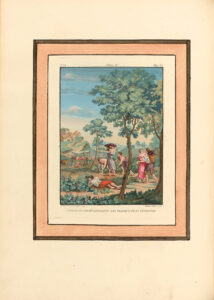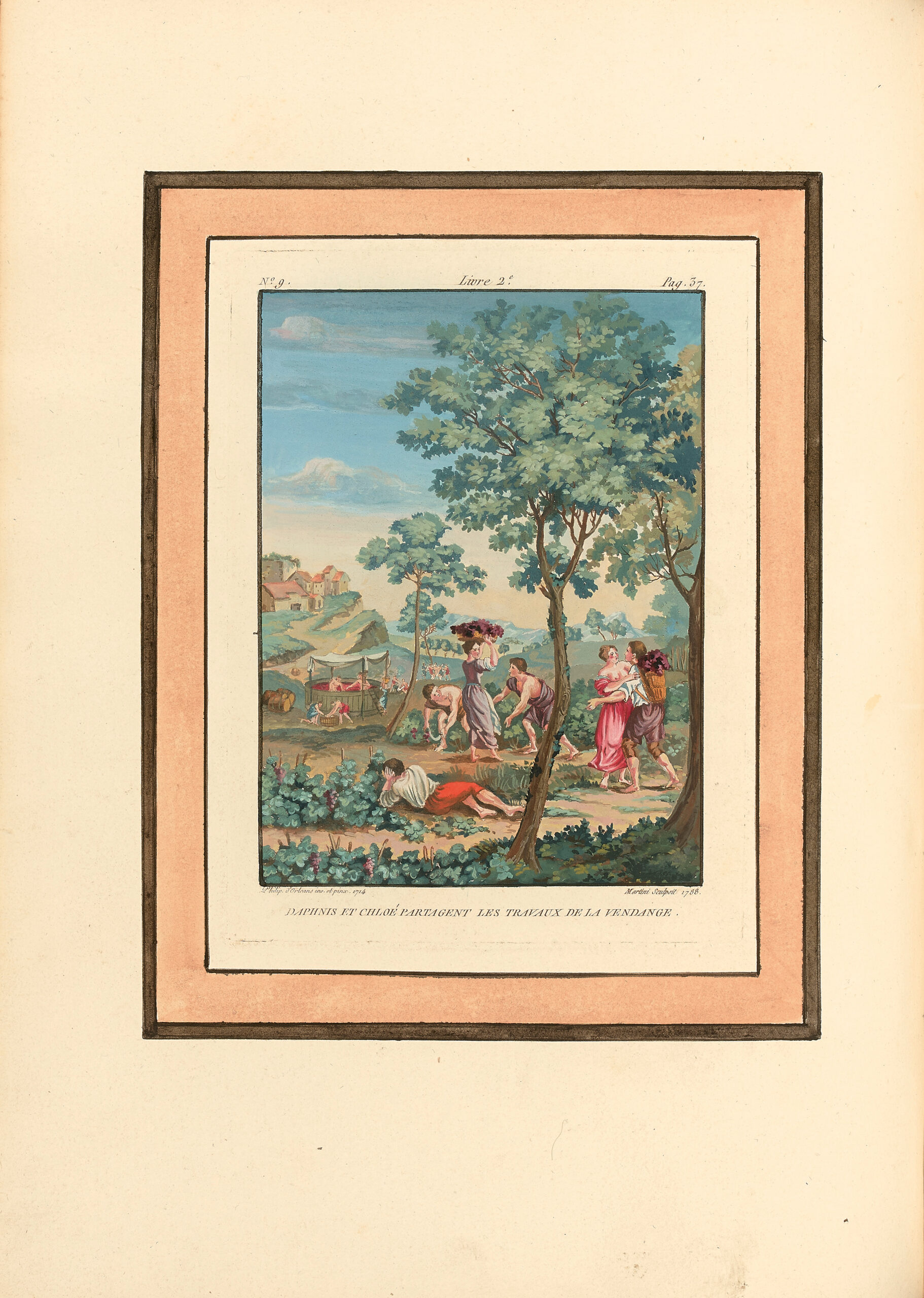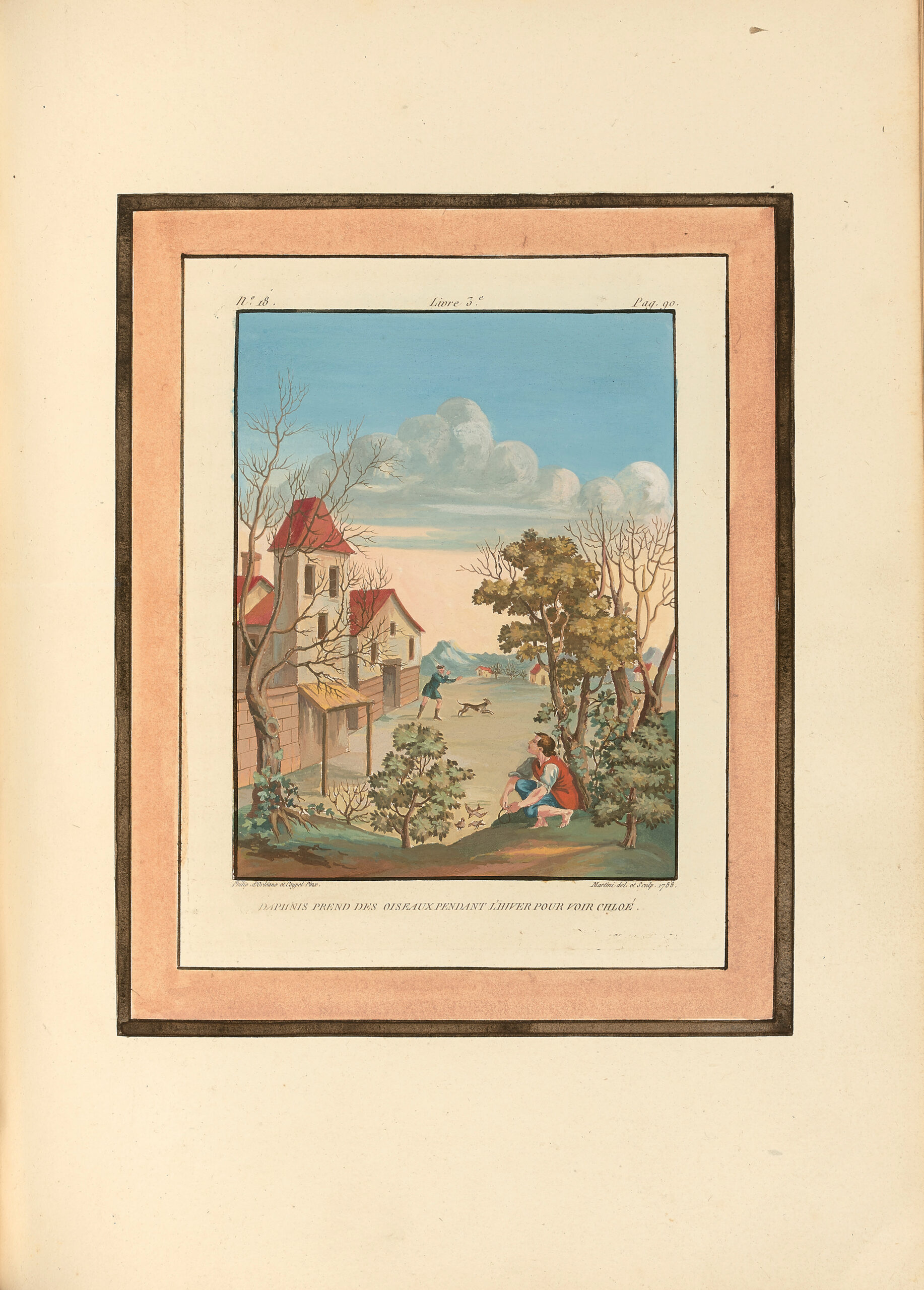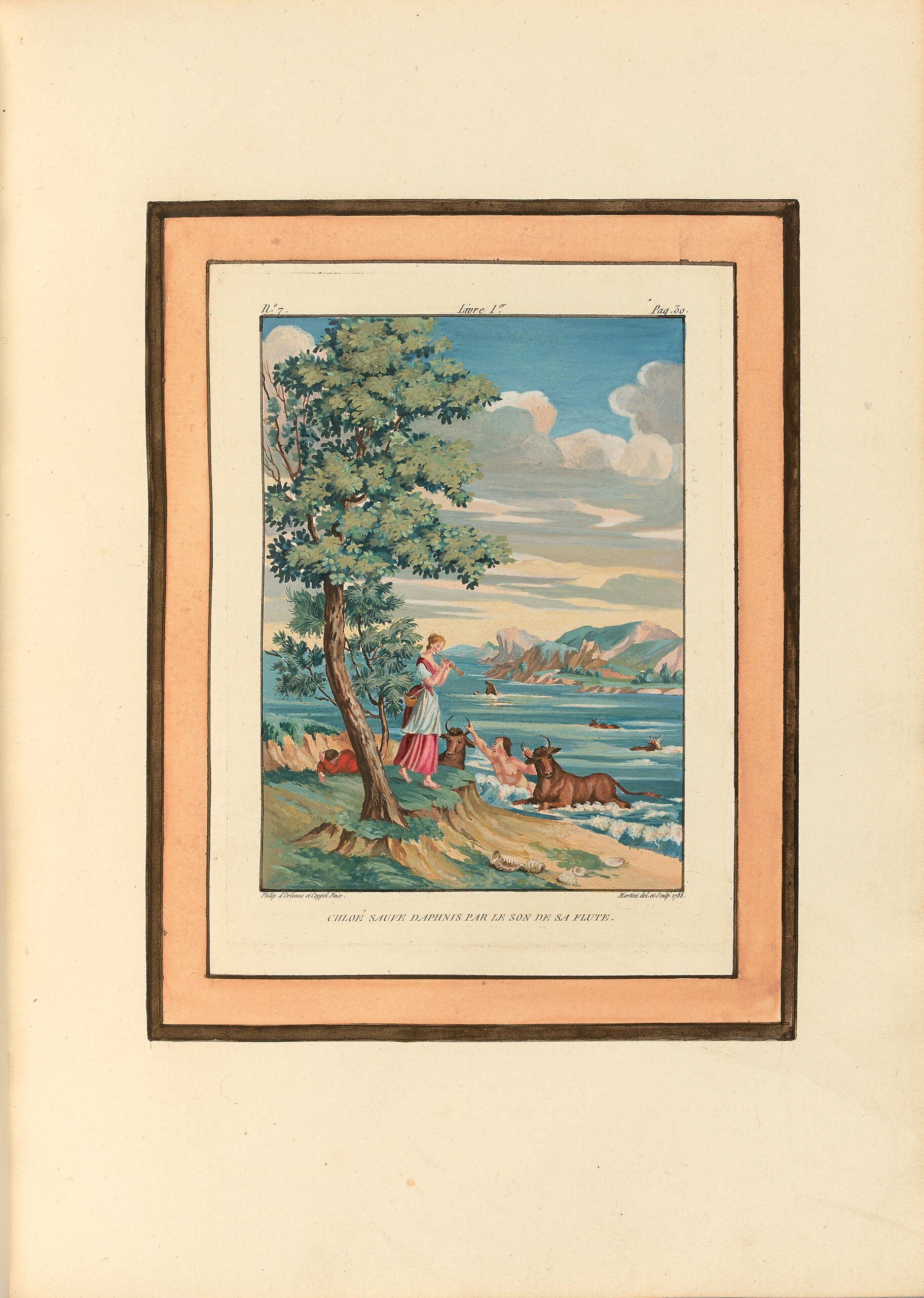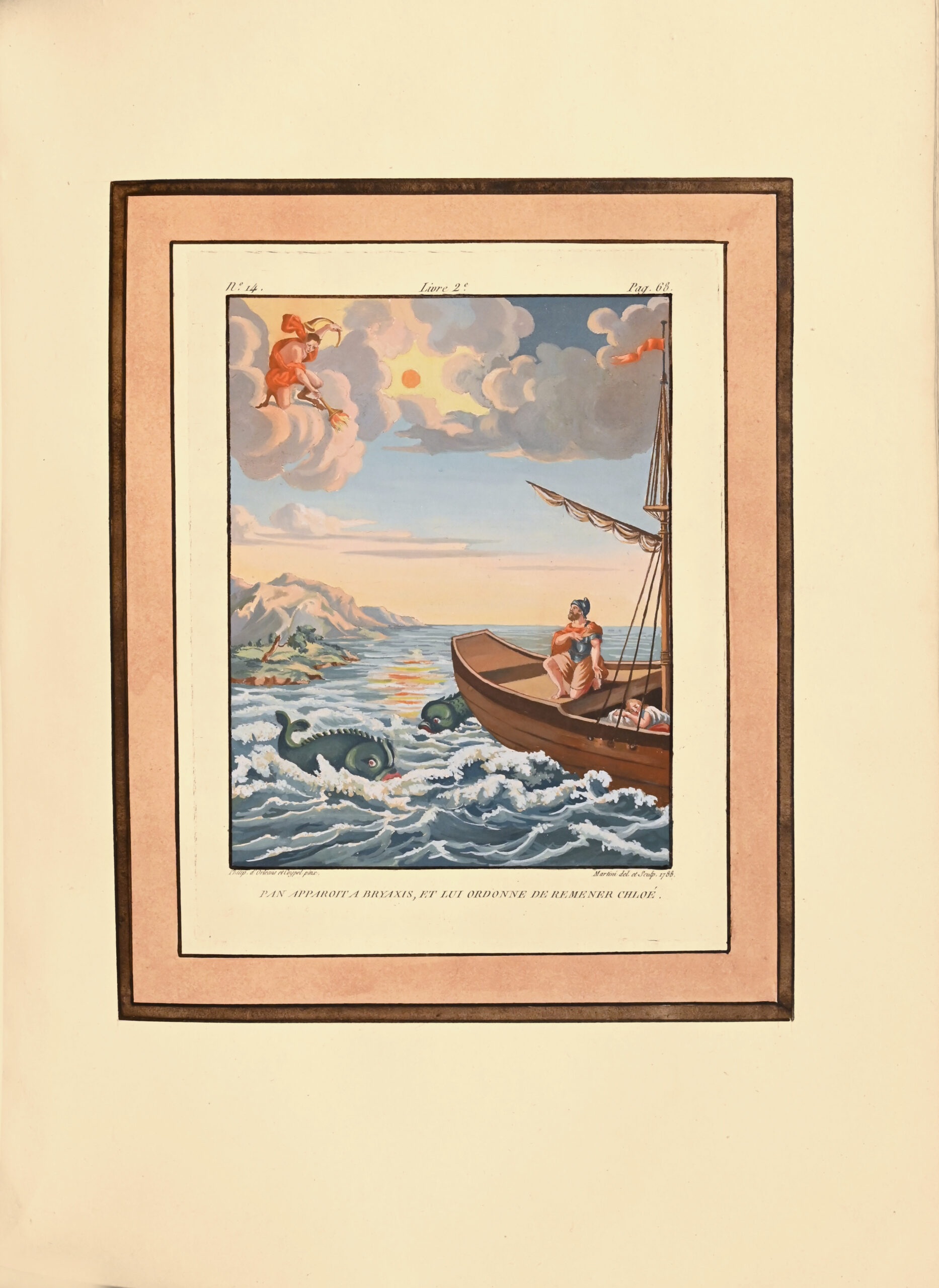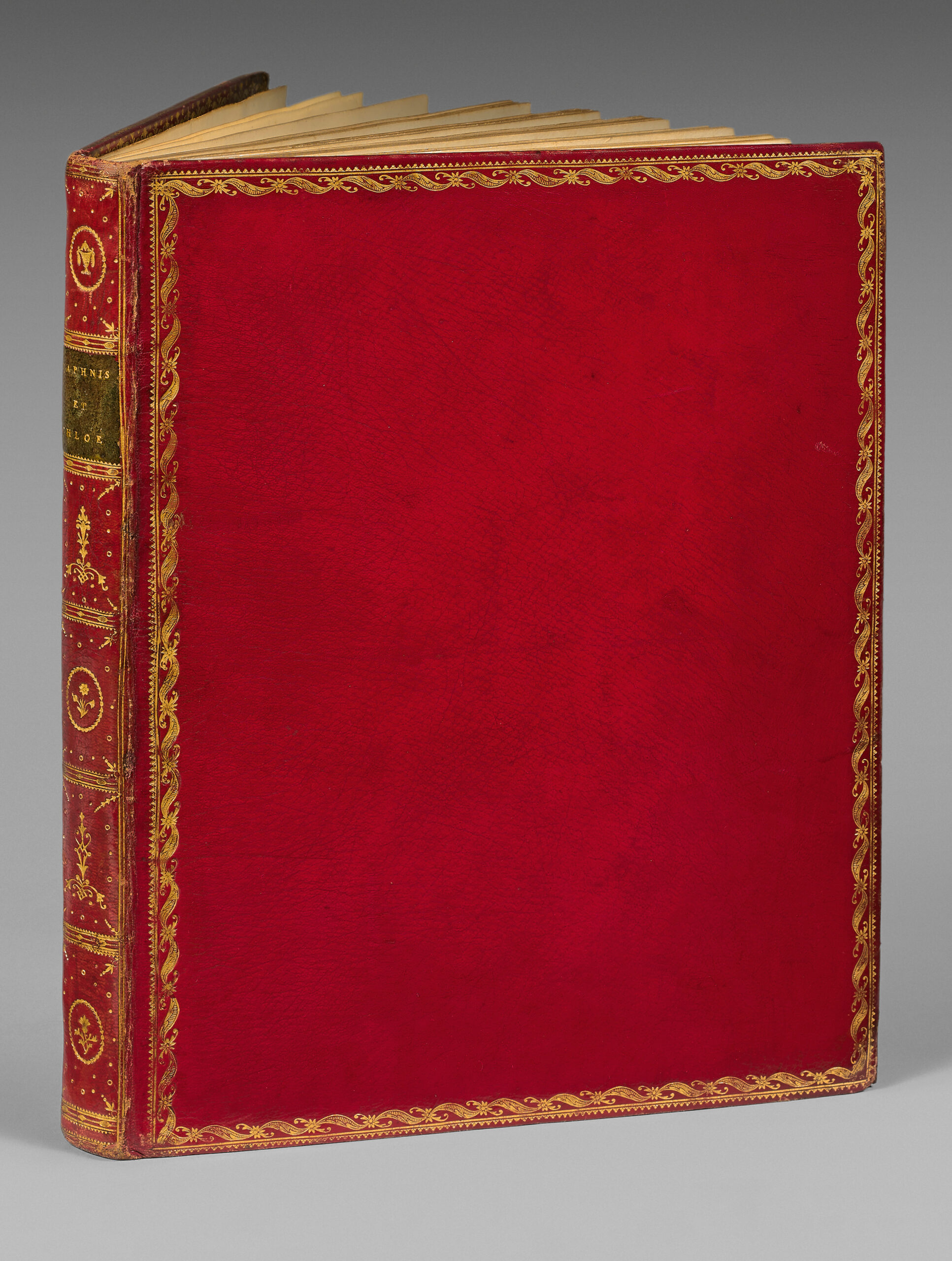Paris, de l’Imprimerie de Monsieur, 1787.
Small folio [319 x 240 mm] of (1) bl. l., viii pp., (1) l., 175 pp., 29 numbered plates out of text in color, protected by silky papers. Red morocco, gilt fillet and garland around the covers, flat spine finely decorated, lettering piece in green morocco, inner gilt roll-stamp, gilt edges. Case. Contemporary binding.
Very beautiful edition of the most famous French illustrated book of the 18th century, printed on the Comte de Provence’s private press, Louis XVI’s brother and future Louis XVIII, illustrated with 29 line duplicates of the original figures of the Regent, engraved by martini.
One of the very rare deluxe copies containing the 29 gouaches printed on vellum.
The paintings are of an exceptional freshness.
“Publisher Lamy had suites of these engravings, printed on vellum, gouached and inserted them in deluxe copies.” (Cohen, 655).
Monsieur’s press was directed by Pierre-François Didot (called “Didot jeune”) since 1779.
In this Greek novel by Longus (end of the 2nd century AD), the author tells the story of the simple and naive love of Daphnis and Chloe, two poor abandoned children.
The peculiarity of Longus’ work, in comparison with the other works of the same kind, is to have left the ups and downs in the background, and to have given full relief to the sentimental adventures of the protagonists.
Daphnis and Chloe have discovered, in a slow progression, their sexuality, and the novel ends precisely on the accomplishment of the carnal act. The novel is celebrating Eros, obviously, but also Pan and the Nymphs.
This book, translated in all languages, was made fashionable again in France thanks to the regent philippe d’orleans, and appeared in several beautiful illustrated editions throughout the 18th century.
This edition offers a new translation by de Bure Saint-Fauxbon.
Superb copy of which all the engravings have been painted in gouache at the time and enhanced with a painted salmon and black double frame, preserved in its contemporary morocco binding.
This precious copy belonged to Napoleon III, as evidenced by his ex-libris affixed to the inner cover of the binding.
Charles-Louis-Napoléon Bonaparte, third and last son of Louis, King of Holland, and Hortense-Eugénie de Beauharnais, and nephew of Napoleon I, was born in Paris at the Château des Tuileries on April 20, 1808 and became on July 22, 1832, on the death of the Duke of Reichstadt, the direct representative of the Napoleonic dynasty; first settled in Switzerland where he was appointed Captain of artillery, in Bern in 1824, he tried, in 1836 in Strasbourg, to overthrow Louis-Philippe in a military movement; arrested and sent to the United States, he made in August 1840 in Boulogne a second failed attempt which resulted in his perpetual imprisonment, but he managed to escape from the Fort of Ham on May 26, 1846, and reached Belgium; back in France during the 1848 Revolution, he was elected Deputy in June 1848, then President of the Republic on December 10 of the same year. His coup of December 2, 1851, against the Legislative Assembly gave him the presidency for ten years; finally, proclaimed Emperor following a plebiscite of November 21-22, 1852, on December 1, 1852, Napoleon III married on January 29, 1853, Marie-Eugénie de Gusman, Countess of Téba, second daughter of the Count of Montijo. Under his reign, France enjoyed great industrial and commercial prosperity due in part to a number of public utility measures taken by the government, while outside, a series of wars, including the end of the conquest of Algeria, gave us Savoy, County of Nice and Cochinchina. Following the defeat of Sedan where the Emperor had been taken prisoner, the Republic was proclaimed in Paris on September 4. Napoleon III died in exile in Chislehurst, England, on January 9, 1873. (Olivier Pl. 2659, 15).
